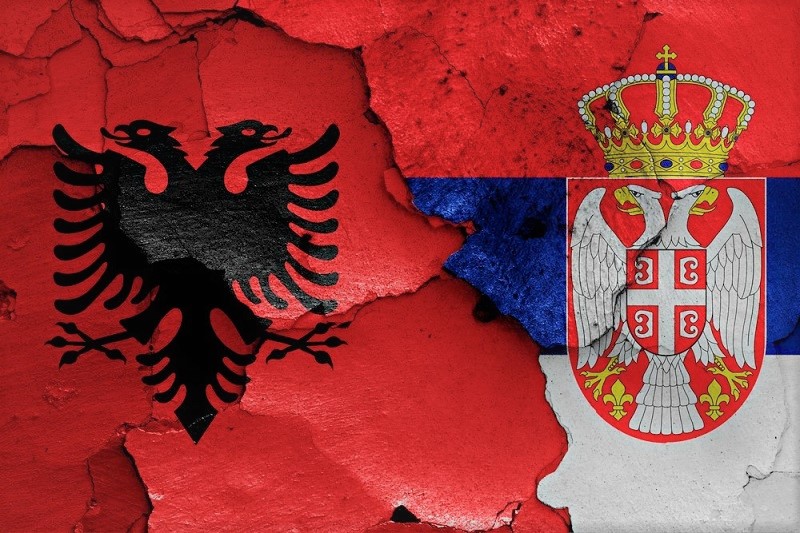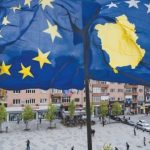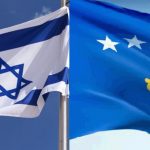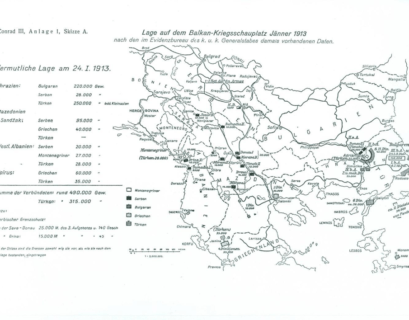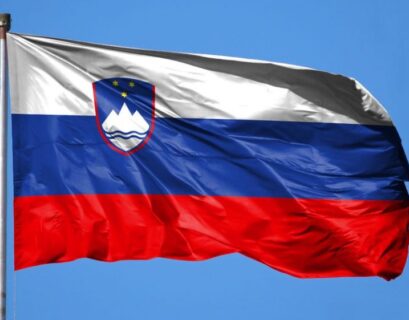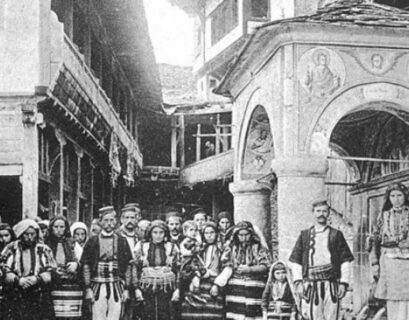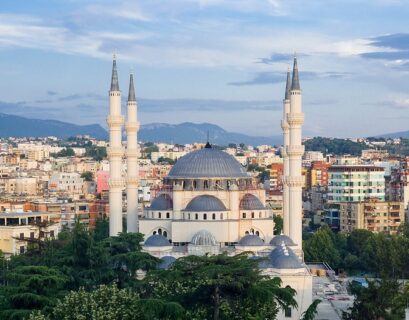Jelica Minić
Introduction
This paper covers the international and regional context of the Serbian-Albanian relations. Several additional areas of existing or potential cooperation were explored by the research team of the European Movement in Serbia in its additional policy briefs on the rule of law, transport, energy, labour market and youth.[1]
The two countries cooperate in various formats – bilateral, regional, European and international, where each gives a special dimension to the advancement of their relations but can also cause specific challenges such as divergent alliances or competitive attitudes. If we were to create a graph, the curve of bilateral relations would be shown as moving up steadily since the year 2014, when good understanding of common interests was expressed at the highest level.[2] However, there have been many oscillations caused by internal political developments in both countries, the Kosovo-related disagreements, or due to contradictory engagement in the political affairs of neighbouring countries.
In spite of the above, trade, infrastructure development, tourism, cultural exchange and civil society activities[3] are all paving the way to normalisation and rapprochement of the two societies and economies, positively influencing the regional map of interconnections. These processes are however still shallow, as the reestablishment of regular political relations took place in 2001, after decades spent without any communication.
The collection of papers of the European Movement in Serbia offers evidence, analysis and some proposals on how to make the bilateral relations more comprehensive and deeply rooted through exchange of experiences and expertise, permanent dialogue and strengthening of the political will in favour of good relations in policy making institutions.
International position of two countries
Serbia and Albania are two small countries that are located in the European sub-region called “the Western Balkans”, which is completely surrounded by EU member states. Both aspire to join the European Union, which constitutes the strongest binding element in their bilateral relations and their engagement in regional cooperation.
Although 20 years have passed since the launch of the Stabilisation and Association process, Croatia is the only country from the Western Balkans region that actually became an EU Member State. Serbia received the full candidate status in 2012, started accession negotiations in 2014, and has since opened 18 negotiating chapters. The European Council granted the candidate status to Albania in 2014. In 2018, the European Commission recommended the opening of accession negotiations, which was repeated twice in 2019 but was postponed again in October[4] with the argument that the Enlargement Policy should be reconsidered/reformed in political and practical terms (conditionality, progress measurement, phases, funds etc.) before the opening of negotiations with Albania and North Macedonia.
The above message from the European Council caused great disappointment in the region. Although all Western Balkan counties were united in the sentiment of unfulfilled hopes and expressions of solidarity with Albania and North Macedonia, the level of their engagement in developing proposals and initiatives on how to come out of the accession stalemate was nevertheless very low. The official reactions were rather silent. Namely, only think tanks and CSOs from the region and beyond loudly expressed their dissatisfaction and concerns about further developments in the region and the future of the EU integration process. The most influential negative reactions came from EU Member States, which considered this decision a “historic mistake”,[5] but the necessity to enhance the accession process and make it more effective was not contested. French President Macron’s[6] non-paper was supplemented by the non-paper of 9 EU Member States[7] supporting the request to the European Commission to come up with a proposal concerning further steps in reforming the EU accession process and opening negotiations with Albania and North Macedonia. Finally, on the 5th February 2020, the EC laid out its proposal on enhancing the accession process[8] with a set of innovations deriving from previous non-papers. It focuses on more credibility, political steering, dynamism and predictability. Thus, it seems that reforms of the enlargement methodology are becoming an integral part of the overall EU reform endeavours.
Serbia expressed interest in strengthening the contractual relations between the two countries in this area, offering an agreement on cooperation and regular consultations on European integration affairs. The Albanian response was rather hesitant and devoid of enthusiasm. If the new enlargement package is to include greater involvement of the Western Balkan candidates in regular EU consultations on certain sectoral policies and reforms, as was indicated in the non-papers, they will have to cooperate much more closely in developing common positions and exploring chances to be taken. Thus, it will most probably become a usual topic on the agenda of bilateral Serbian-Albanian meetings.
In October 2019, Serbia signed a free trade agreement with the Russia-led Eurasian Economic Union (EAEU)[9], joining Russia, Belarus, Kazakhstan, Kirgizstan and Armenia. This happens to be an issue for the European Union due to the fact that the EU had imposed sanctions on Russia on 2014, which Serbia, despite its candidate status, did not comply with. Despite this now formalised affiliation, according to the statements of high state officials there should be no doubt as to Serbia’s pro-EU orientation. However, the recent public poll (Factor Plus agency) shows that only 35 percent of citizens in Serbia are in favour of the European integration, while 38 percent are against it.[10] It remains to be clarified whether this is an indication of lack of information and understanding of the multiple crises in the EU and the slow progress of the enlargement process, or a deep popular dissatisfaction with the dominant foreign policy option, implying growing preferences towards the East.
Albania is a member of NATO, while Serbia closely cooperates with the Alliance through the Individual Partnership Action Plan (IPAP) which represents the most intensive form of bilateral cooperation between NATO and countries that are not its full members. Serbia also has the observer status in the Collective Security Treaty Organisation (CSTO)[11] founded by Russia, Armenia, Kazakhstan, Kyrgyzstan, Tajikistan and Uzbekistan.
Cooperation with great powers is differently structured. Serbia has developed close ties with Russia (political, military and energy-related, with a growing economic impact) and recently China (political and infrastructure, mining and industry-related), as well as Turkey as a regional power and the Arab Emirates. Together with Albania, Serbia is one of the founding members of the Chinese 17+1 Belt and Road Initiative (BRI) intended to strengthen cooperation between China and Central, East and Southeast European countries regarding investment, transport, financing, training and science. According to the China Global Investment Tracker (CGIT), Chinese investment and construction contracts in Serbia have grown to USD 8.5 billion since the beginning of the Belt and Road Initiative (modernisation of railways, steel production, copper exploration, extraction and processing, greenfield investments, etc.). Within the CEE region, 20 percent of the Chinese investments are in Serbia. Serbia’s share is even bigger when compared with the CE/SEE region only: here, 56 percent of all Chinese investments have been made in Serbia[12].
Relations with the US have been much better since President Trump and his administration took office, focusing mostly on political and military cooperation. However, unlike these positive developments, the US trade in goods with Serbia[13] is much lower than Serbia’s trade in goods with Montenegro and is comparable with its registered trade in goods with Kosovo prior to the introduction of 100% taxes on goods from Serbia in November 2018.[14] Serbian trade with the EU (USD 28,653.5 million in 2019) was almost 60 times higher than that with the US (USD 490.6 million) and 8 times higher than trade with the Russian Federation (USD 3,561.1 million), in 2019.[15] This reflects appropriately the intensity of Serbian political relations with the EU, providing the main framework for the advancement of Serbian-Albanian relations. However, it does not show the extent of Russian economic involvement in the Serbian economy. For example, the Oil Industry of Serbia, with Gazprom Neft as the majority shareholder (owning 56.15% of NIS shares), is the main supplier of the Budget of Republic of Serbia.[16]
Besides the EU as Albania’s main economic and political partner, the US is its key strategic foreign policy partner both in political and military terms. However, Albanian trade in goods with the US amounted to only USD 142.2 million[17] in 2019, while its trade with Serbia was USD 91.7 million. The European Union remains Albania’s main trading partner (78.5% of the total exports in 2017, mostly directed at Italy), followed by Serbia (7.8%). The bulk of imports come from the EU (55.9%, with Italy accounting for nearly 30%), Turkey (7.4%) and China (7.2%).[18]
Albania has good relations with China, based on the growing Chinese interest in Albanian oil exploration and production, investment in mining of other strategic resources (chromium, copper, nickel), and transport infrastructure and trade zones. According to the Czech project Sinopsis on the impact of China on the outside world, “Albania has signed an agreement on BRI, but it has taken a cautious approach and has been careful not to take any actions that might harm its relationship with NATO”.[19] The Chinese Belt and Road Initiative (BRI) included both countries in this wider strategic intercontinental project primarily focused on transport infrastructure.
Russia is interested in pipeline interconnections through Albania (connecting the Turkish Stream, the Blue Stream or the Trans Balkan Pipeline with the Trans Adriatic Pipeline). The energy sector is the main field of extending Russian interests in both countries, but the defence sector has also become relevant in the case of Serbia in the last few years, together with wider economic cooperation. However, as many authors have stated, “Russia does not have a long-term plan for the Balkans, aside from obstructing the West, and is not prepared to expend scarce economic and military resources and run risks, such as a direct confrontation with NATO.”[20]
Growing trade with and investments by Turkey are also filling the gap in the relations with the EU which are not expanding in line with the expected dynamics.
Developments in the Middle East have also been reflected in Serbia and Albania. For example, more than one third of the Serbian export in arms and military equipment, worth approximately USD 200 million – made directly but also through companies registered in the US, Bulgaria, Cyprus and Slovenia) – go to the United Arab Emirates (UAE) and Saudi Arabia and are linked with the wars in that region.[21] Albania, on the other side, hosts more than 3,000 members of the Iranian opposition group Mujahedeen-e-Khalq (MEK),[22] causing much strain to the current relations between Teheran and Tirana.[23] None of these involvements have contributed to the improvement of the general geopolitical position of the two countries, especially in their close neighbourhoods.
Historically, the two countries have different gravitation centres – the Mediterranean (Italy and Greece) for Albania and Central Europe (Austria, Germany and Italy) for Serbia. There is no doubt that “in economic, social, and also purely geographical terms, the former Yugoslav republics and Albania gravitate towards the West”.[24] However, in specific historical circumstances Serbia had always turned to Russia, this time due to recent conflicts in former Yugoslavia, the NATO intervention and the Kosovo issue.
Participation in regional cooperation
Serbia and Albania are members of numerous regional bodies involving the Western Balkan countries but also in those which cover wider South East European, Central European, Black Sea, or Adriatic Ionian areas where they work together at solving common problems through different regional mechanisms which are expected to also result in general political rapprochement.
According to the data of the Regional Cooperation Council on intergovernmental regional initiatives and organisations,[25] both countries are members of approximately 50 such bodies. While waiting for EU membership, regional structures were the main binding factor in the Western Balkans which provided space for “normality” in the turbulent region, where different actors were able to recognise common interests and were committed to achieve them – from the economic and social sphere, infrastructure and energy, environment, security and defence, parliaments and local authorities, to education, science and the regional labour market[26].
However, the tax of 100% introduced by Kosovo in November 2018 on exports from Serbia and Bosnia and Herzegovina influenced the general climate for regional cooperation and caused in particular problems in CEFTA. Although this did not affect trade between Serbia and Albania, the unregistered flow of goods increased, which had already been the practice albeit at a lower level. These developments did however induce a polarisation of interests between Albania supporting Kosovo on the one side, and Serbia doing the same for BiH on the other, paralysing the work of CEFTA, which at the same time had internal problems with reorganisation. These divisions proved to be harmful for the functioning of other regional organisations and initiatives whose activities had developed rather smoothly in the previous period[27].
The Berlin Process, which was initiated in 2014, gave a great impetus to the existing regional structures launching with their assistance important new initiatives such as the Connectivity Agenda, Regional Economic Area, Digital Agenda, labour mobility in the region, youth cooperation, solving bilateral disputes, etc. The existing regional organisations and some newly established ones were supposed to bear the complex burden of intertwined activities so as to bring Western Balkan countries closer to the EU and each other. Any serious deterioration of bilateral relations harms the great efforts that have been invested in regional cooperation and the confronted sides in particular. Thus, Serbia and Albania are indeed affected by the escalation of the Serbia-Kosovo problem and lack of dialogue. This is also reflected in the regional framework, and will threaten mutual confidence as well as practical endeavours in different areas if the problem is not solved in the foreseeable future.
The so called “mini Schengen”, as the most recent trilateral initiative (Albania, North Macedonia and Serbia) which is also open to other Western Balkan countries, is strongly supported by the US and the EU. At the same time, however, it has caused resistance in other potential member countries. It was not made sufficiently clear that this initiative is completely in line with the Multiannual Action Plan for the Regional Economic Area (MAP REA), adopted at the Trieste Summit of the Berlin Process in 2017.[28] The only difference happens to be the agreement on the free movement of people through the region using only their identity cards, which is already the case with the majority of Western Balkan citizens. Passports are only needed for travelling between Serbia-Albania and Albania-BiH and for BiH-Kosovo citizens of both sides have even to apply for visas. The main goal of this initiative is to eliminate more quickly the obstacles to trade, investment and mobility of people as already envisaged in the MAP REA. If other Western Balkan partners join, it will automatically eliminate the visa regime between Kosovo and BiH, once again liberalise the trade between Kosovo and Serbia and Kosovo and BiH in line with the CEFTA rules, and contribute to some form of consolidation of the regional labour market which is becoming devastated as a result of the exodus of young, qualified labour force.[29]
Conclusions and Recommendations
The mapping of external partnerships of the two countries shows some similarities coupled with different configurations depending on the situation in the region, especially the Kosovo-Serbia relations which are pushing Serbia closer to Russia and Albania closer to the US, with a risk of petrifying the already frozen conflict that keeps these countries apart, distant from a historic agreement that could turn them both into more relevant actors at the regional and international scene.
Two developments that could offer a promising outcome for both countries are: faster progress in the EU accession process and advanced regional cooperation. However, there are still numerous internal and external obstacles along these lines of convergence.
Bilateral relations of Serbia and Albania could be considered as one of the least difficult cases in the Western Balkan region as there is no burden of recent past.[30] The main task is to normalize and intensify their bilateral relations in all areas, in particular those where they show evident progress (trade, tourism, culture, civil society). A favorable regional and international context facilitates this process (EU integration, the Berlin Process, regional organizations) while divisive aspirations of regional and international actors make it difficult.
But the role of internal political actors has been crucial in getting relations of the two countries stable and more promising. It was reflected in different public pools showing mutual perceptions of citizens in both countries, media coverage researches, think tank and civil society analyses, chambers of commerce and tourism organisations initiatives, or youth joint projects and networking. Without political commitment to cooperate bilaterally and at the regional scene and without understanding of the big European picture and caveats of the EU integration process, as well as wider international interests in the Balkans the distance between two countries could remain much wider than the geography would suggest.
Jelica Minić is President of the European Movement in Serbia.
[1] In the additional four policy papers, prepared for the Annual Forum by the European Movement in Serbia’s team, special attention was paid to the “Common Problems and (Possible) Cooperation in the Rule of Law and Legal Reforms”, by Vladimir Medjak, “Energy and Transport Connections between Serbia and Albania”, by Aleksandar Kovačević, “Serbia and Albania at the Regional Labour Market”, by Jelena Žarković, and “A path towards better youth cooperation between Serbia and Albania”, by Djordjo Cvijović. We believe that, if approached in a coordinated manner, these issues could bring two societies and economies closer together.
[2] “Albania premier makes historic visit to Belgrade”, DW, 10 November 2014. https://www.dw.com/en/albanias-premier-makes-historic-visit-to-belgrade/a-18051456
[3] More extensive list of specific areas of cooperation can be found in Madhi, G. and Minić, J, “Albania – Serbia relations: Bridging over troubled waters”, in Juzova, J. ed, From Warsaw to Tirana: Overcoming the past together, EUROPEUM, Prague, 2019. http://wise-europa.eu/wp-content/uploads/2019/11/FROM-WARSAW-TO-TIRANA-OVERCOMING-THE-PAST-TOGETHER.pdf
[4] Fouéré, E, “Macron’s “non” to enlargement”, Center for European Policy Studies, Brussels, 22 October, 2019. https://www.ceps.eu/macrons-non-to-eu-enlargement/
Bojović, Đ, „Harness the Outrage Triggerred by Macron’s Enlargement Veto“, BIRN, Brussels, 13 November 2019. https://balkaninsight.com/2019/11/13/harness-the-outrage-triggered-by-macrons-enlargement-veto/
[5] Lukić, F, “A French ‘Historic Mistake’ and Counter Offer for the Balkans”, Instituto per gli studi di politica internazionale, Rome, 22 January 2020.https://www.ispionline.it/it/pubblicazione/french-historic-mistake-and-counter-offer-balkans-24814
[6] Herszenhorn, D.M, and Momtaz, R, “France outlines proposal to overhaul EU accession process”, Politico, Brussels, 17 November 2019.https://www.politico.eu/article/france-outlines-proposal-to-overhaul-eu-accession-process/
[7] Non-Paper: Reforming the European Union accession process, November 2019.https://www.politico.eu/wp-content/uploads/2019/11/Enlargement-nonpaper.pdf
[8] European Commission, Enhancing the Accession Process – A Credible EU Perspective for the Western Balkans, 5 February 2020 https://ec.europa.eu/commission/presscorner/detail/en/IP_20_181
[9] Serbia Signs Trade Agreement with Russia-Led Eurasian Economic Union, Radio Free Europe / Radio Liberty, 25 October 2019 https://www.rferl.org/a/serbia-to-ink-trade-agreement-with-russia-led-eurasian-economic-union/30235917.html
[10] “Faktor plus: Samo 35 odsto građana Srbije za EU” [Factor Plus: Only 35 percent of the population of Serbia is pro-EU], Danas, 20 January 2020. https://www.danas.rs/drustvo/faktor-plus-samo-35-odsto-gradjana-srbije-za-eu/
[11] Avedissian, K, “What is the Collective Security Treaty Organization?”, EVN Report, The Black Sea Trust for Regional Cooperation, 6 October 2019. https://www.evnreport.com/understanding-the-region/fact-sheet-what-is-the-collective-security-treaty-organization
[12] Grubić, Lj,“ Serbia’s increasing importance for China’s BRI”, Emerging Europe, 25 June 2019 https://emerging-europe.com/voices/serbias-increasing-importance-for-chinas-bri/
[13] https://www.census.gov/foreign-trade/balance/c4801.html
[14] Bjelotomić, S, “Serbia’s exports to Kosovo decreased by 99% due to taxes”, Serbian Monitor.Com, 21 November 2019. https://www.serbianmonitor.com/en/serbias-exports-to-kosovo-decreased-by-99-due-to-taxes/
[15] https://publikacije.stat.gov.rs/G2020/PdfE/G20201025.pdf
[16] “Intervju Kirila Tjurdenjeva, generalnog direktora NIS-a, za GAZPROM reviju”, NIS Press Center, 04 December 2018 https://www.nis.eu/lat/presscentar/intervjui/intervju-generalnog-direktora-nis-kirila-tjurdenjeva-za-gazprom-reviju
[17] https://www.census.gov/foreign-trade/balance/c4810.html
[18] https://import-export.societegenerale.fr/en/country/albania/trade-country-risk
[19] Brady, A. and Higashi, H, “Are we real friends? Albania-China relations in the Xi Era”, Sinopsis, AcaMedia z.u. and Department of Sinology, Charles University, Prague, 17 September 2019 https://sinopsis.cz/en/are-we-real-friends-albania-china-relations-in-the-xi-era/
[20] Bechev, D, “Russia’s strategic interests and tools of influence in the Western Balkans”, Atlantic Council, 20 December 2019 https://www.atlanticcouncil.org/blogs/new-atlanticist/russia-strategic-interests-and-tools-of-influence-in-the-western-balkans/
[21] “One third of the exports of Serbian WEAPONS ends up in the Middle East”,BIZLife , Belgrade, 8 July 2019 https://www.bizlife.rs/en/business/business-news/one-third-of-the-exports-of-serbian-weapons-ends-up-in-the-middle-east/
[22] “Iran leader targets Albania amid growing US-Iran conflict”, Tirana Times, 10 January 2020 http://www.tiranatimes.com/?p=143836
[23]Vuksanović, V, “Balkans Risks Being Caught in Crossfire over Middle East”, BIRN, London, 24 January 2020, https://balkaninsight.com/2020/01/24/balkans-risks-being-caught-in-crossfire-over-middle-east/
[24] Ibid.
[25] RCC, RCC Strategy and Work Programme 2014-2016, Overview of Regional Initiatives and Task Forces in South East Europe, Annex III and RCC Strategy and Work Programme 2017-2019, Annex 1. In the meantime, several new organisations and initiatives were established, such as the RYCO and WBF. http://www.rcc.int/admin/files/docs/reports/RCC-Strategy-and-Work-Programme-2017-19-rich.pdf
[26] Madhi, G. and Minić, J, op.cit. p.4.
[27] Ibid.
[28] Regional Cooperation Council, “Multi-annual Action Plan on a Regional Economic Area in the Western Balkans Six (MAP REA)”, Berlin Process Trieste Summit, 12 July, 2017. https://www.rcc.int/docs/383/consolidated-multi-annual-action-plan-for-a-regional-economic-area-in-the-western-balkans-six
[29] Aliu, M, Manasiev, A, Bogdani, A, Mlađenović, D, Marinović, M, “Balkans, dreaming of a future elsewhere”, Osservatorio Balkani e Caucaso, Transeuropa, 06 December 2019 https://www.balcanicaucaso.org/eng/Areas/Balkans/Balkans-dreaming-of-a-future-elsewhere-198353
[30] Madhi, G. and Minić, J, op.cit. p.7.


